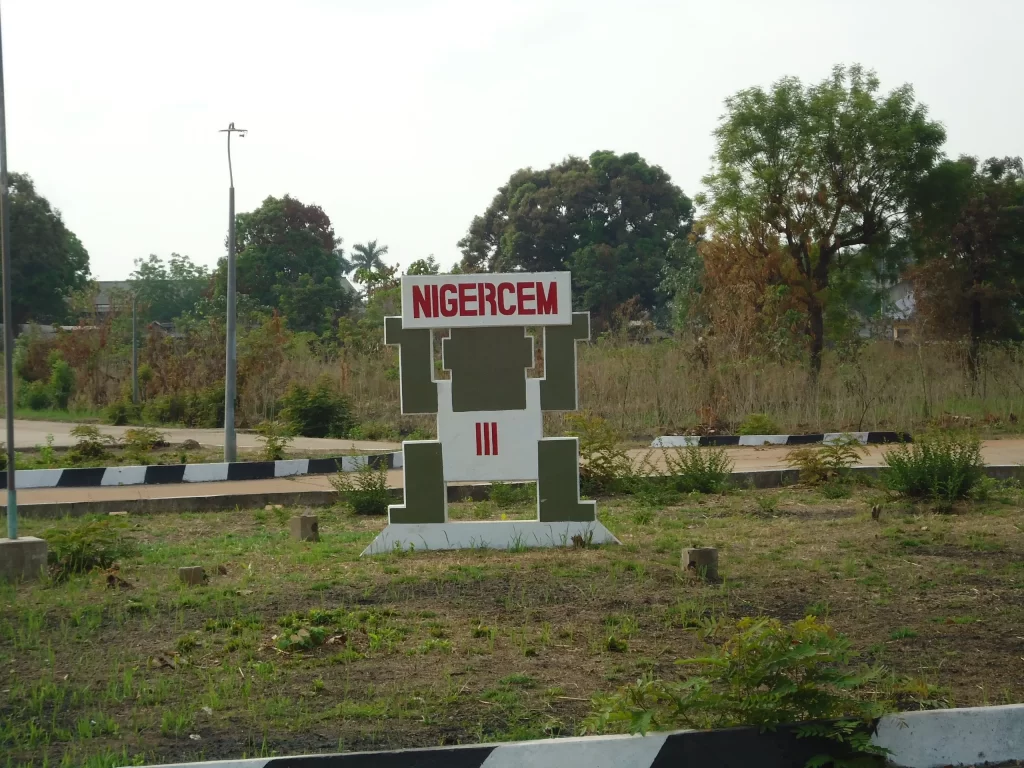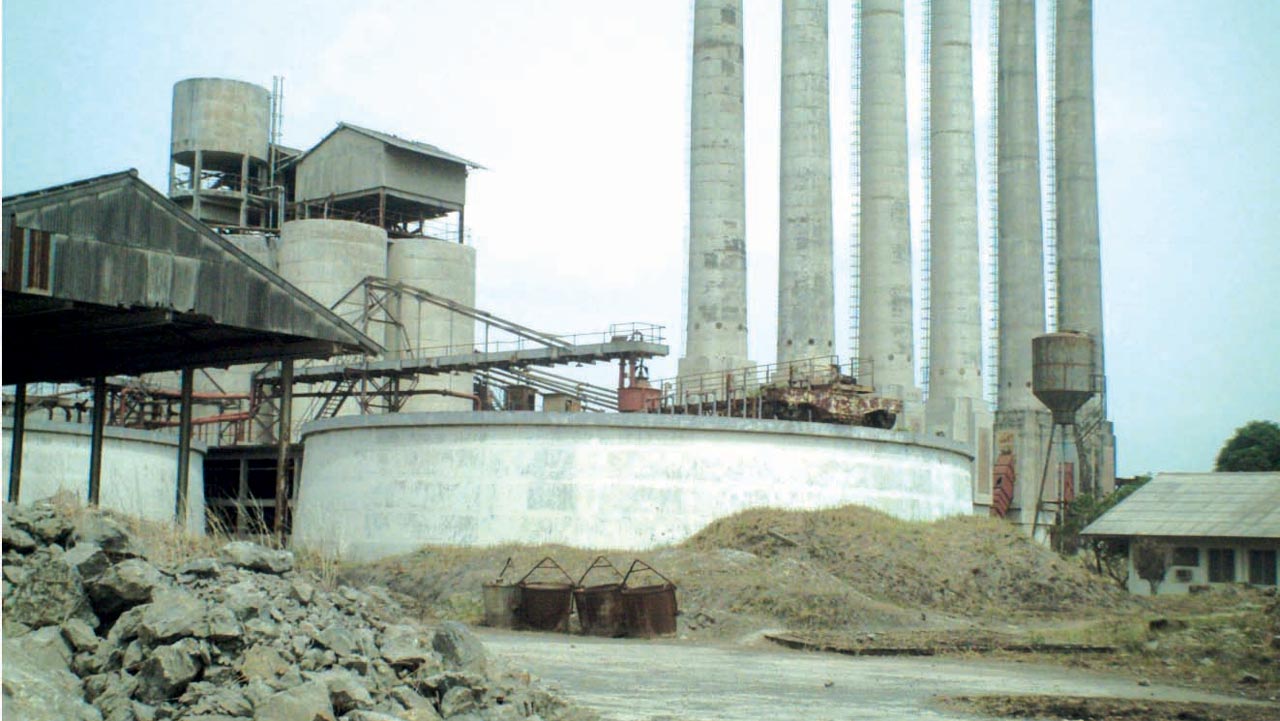The Nigerian Cement Company also known as NIGERCEM was the first cement production company, to be established in in Nigeria. It was established by the federal government in collaboration with the Government of the Eastern Region in 1956, at Nkalagụ, Ebonyi State. The company commenced operation in 1957 with a production capacity of 120,000 metric tons. It was however privatized in 2002 under the Olusegun Obasanjo regime, with its last production as far back as September 2000. Here is the history of NIGERCEM, How it was founded, the cause and reasons for its decline and eventual privatization
However, before getting into the History of The Nigerian Cement Company (NIGERCEM), we must briefly consider the history of Nigeria’s cement industry during the colonial period, as most precursors that led to the founding of the decline of the company can be found in Industry’s historical development.
History of Nigeria’s cement industry during the colonial period
One of the Numerous phenomena that came alongside colonization was cementitious architecture. Before that, the Pre-colonial societies that existed within Nigeria, had distinctive methods of constructing their dwellings, buildings devoid of cement. Following the introduction of this style of Architecture, cement and building materials were imported into the country and as expected the cement trade in Nigeria was dominated by British entrepreneurs.
These entrepreneurs who were mainly agents of the Associated Portland Cement Manufacturers (APCM), a British cement multinational cement company constituted themselves into a syndicate, the Cement Marketing Company Limited, and took control of the cement importation business in West Africa
With the increasing demand for cement in Nigeria, Lord Lugard, the then Governor-General, proposed the introduction of cement manufacturing in Nigeria in 1919. However, the syndicate that dominated the importation and supply of cement in Nigeria did not consider the establishment of a local plant to be viable. For example, the proposed construction of a 25,000-ton cement factory near Makurdi and Enugu was declined because of the high cost of electricity, which is crucial to cement manufacturing.
In 1950, the federal colonial government again invited APCM, to establish a local cement production plant in the country. The company, however, declined the invitation, because “there was a certain natural disposition to supply Nigeria with APCM’s efficient plants in the United Kingdom. Despite this, cement demand and its importation into Nigeria continued to grow, rising from 153,861 tons in 1950 to 297,436 tons in 1953.
The History of Nigercem
Unable to find willing investors, the federal government decided to become the major investor in the project. Collaborating with the government of the eastern region, the Nigerian Cement Company (Nigercem ) was founded. The company which was based in Nkalagu, Eastern Nigeria, subsequently commenced operation in 1957 with a production capacity of 120,000 metric tons.
NIGERCEM marked one of the initial steps in the government’s Import Substitution Industrialization (ISI) strategy, aiming to reduce dependence on imported cement. In 2002, NIGERCEM was sold to its present core investor, Eastern Bulkcem Port Harcourt. Many eagerly await its revival as a common heritage in Eastern Nigeria.
The production facility in Nkalagu received its power supply from the Oji River power station in Enugu State, and the coal necessary for operations was obtained from Enugu – Udi. An inactive railway line, once connecting Port Harcourt to the northern regions of Nigeria, passed through Nigercem.
Over time, Nigeria Cement Company Limited (Nigercem) witnessed a steady rise in production volumes, establishing a strong presence in both the domestic and international markets. It reached its peak when it recorded production of over 480,000 tonnes of cement in 1975.
The company generated enough revenues to run itself, including payment of staff salaries and other emoluments. It blossomed to the point of establishing auxiliary factories such as bagging companies, printing outfits, fish farms, hospitals, and so on.
Decline of Nigercem
Following the creation of additional states in 1976, the Nigerian government reduced its shares and control from 42.9 to 10 percent, for the southeast states to have majority control in the company. Many people believed that this marked the point of the company’s degeneration from its original state, as the management of the company became characterized by undue influence and interference by the state governments.
Things became worse when the coalition of the eastern state governors instituted a policy whereby the Chief executive officer of the company must be hot state, while the other members on the board of directors must be appointed from the remaining owner states. This policy of appointing executives based on state of origin rather than merit was detrimental to the Nigerian Cement Company. Ultimately leading to its decline.
As a result of the back-and-forth movements around the company, especially concerning the fortunes of the cement firm, the governors of the five Southeastern states of Anambra, Abia, Enugu, Imo, and Ebonyi slated the company for privatization, through a technical committee appointed for the purpose.
By the manner of its privatization, the governors ceded Nigercem to Eastern Bulkcem, manufacturers of Port-Harcourt, Rivers state-based Eagle Cement as majority shareholders. Unfortunately, Bulkcem snubbed all the stipulated conditions and guidelines for reviving the cement company. A major default of Bulkcem was its refusal to offset arrears of salaries and emoluments owed to the workers before the privatization.
Rather than turn Nigercem around, there are reports of Eastern Bulkcem dismantling and carting away several equipment of from the factory. However, Several administration of the Ebonyi State government has shown several efforts toward the revitalization of the Nigerian Cement Company (NIGERCEM)
Conclusion
National cement companies are cornerstone institutions in the construction and infrastructure development of their respective countries. They signify a nation’s self-reliance and capability to produce a vital building material. NigerCem at its peak was a critical player in the African cement market, not only meeting domestic needs but also expanding its influence across the continent.
The company also played a pivotal role in the economic development, of Nigeria in the 1970s as it created jobs, contributed to the GDP, and reduced the reliance on cement imports. Additionally, It led the way in adopting sustainable and innovative practices to meet the growing demands of the construction industry while minimizing environmental impact.




